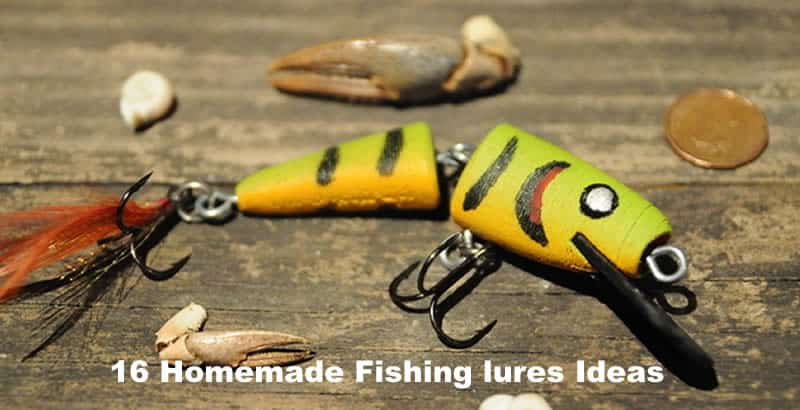If you buy via a link on this page, we may receive a commission, at no extra cost to you.Learn more
Sunfish is a unique fish that is found in many oceans but is, unfortunately, nearing extinction. While these fish are fairly easy to catch, some locations actually have laws in place protecting the fish and limiting your ability to catch them. However, if it is legal in your area, you can truly enjoy catching the fish and may even take them home with you.
Are sunfish good to eat? Sunfish has an amazing flavor that many fish lovers enjoy, but these fish do have some differences from others when it comes to preparation. Those who catch the fish must know exactly how to prepare them in order to eat them safely and for them to be tasty.
Better understanding sunfish, the filleting methods, and how to prepare them is a great way to get the most from the fish that you catch. With proper preparation, they can provide a unique flavor that is unlike much other ocean fish. Also, due to their large size, these can be great fish for providing a large amount of meat with one catch.
The Basics of Sunfish

The first step of cooking sunfish is guaranteeing that you have caught a sunfish, to begin with. While these fish are relatively easy to spot, for new fishermen or those who are not as well versed in the various ocean species, it can be challenging to distinguish them. In some areas, sunfish are referred to as mola, and they are quite a large fish compared to many others in the ocean.
You will mainly find sunfish in tropical areas, but they are becoming more and more scarce each year. While the European Union has banned the consumption and sale of sunfish, some areas that are still present are Japan, Korea, and Taiwan.
They are rather thick and can grow quite heavy, making them good fish for eating purposes. However, due to the lowered numbers, the fish is now considered a delicacy. While they are hard to find, you can see the fish on menus around the world, mainly in luxury restaurants.
Characteristics of Sunfish
While the sunfish is a unique fish, it can be mistaken for others if you have never seen them in real life before. Identifying these features and knowing what to look for can help you guarantee that you know exactly when you have caught a sunfish. Some key characteristics are:
- The fish are very thick and also tall, with many being almost five feet in height. The fish has ventral and dorsal fins. The distance between these fins can range but is approximately eight feet in adult fish.
- The female sunfish can produce an extremely large number of eggs, in fact, more than any other vertebrate on earth. This number ranges but has been noted at more than three hundred million eggs.
- Sunfish survive on a diet of mostly jellyfish, explaining their large size.
- As mentioned, in other areas of the world, you can find sunfish being referred to as mola or the scientific name Mola Mola.
Fishing for Sunfish
If you are interested in fishing for sunfish, first, you will want to ensure that it is legal in your area. Fishing for mola in the European Union is mainly illegal due to its endangered status. You always want to make sure this is not banned so that you do not get in trouble while fishing.
When you are jumping into the world of sunfish fishing, you want to guarantee that you have the right equipment in place. You cannot use just any gear to catch the fish and want to be prepared. Some key things to have before embarking on a sunfish fishing trip are:
- A long, shank-wire-type hook is used. It is extremely important, and you will want to use this special hook. You will want to flatten the barb to allow for easy removal when you do make a catch.
- Many fishermen keep surgical forceps in their tackle boxes for sunfish fishing, as they perform well when carefully removing the hook from the fish.
- To catch the fish, you will want to use small lures. Those jigs that are designed for trout work well for sunfish. Natural baits work better in many instances, which is why crickets and worms are a great choice if you can get them.
- You may want to opt for fly fishing if this is something you are interested in. Sunfish bed regularly and will bite flies, nymphs, spiders, and more.
How to Filet Your Sunfish Catch
Before starting the filleting process, you will want to ensure that your fish is no longer alive. Once you know that the fish is not alive, you can begin the filleting process. You should follow these steps to get the perfect cut and prepare your fish for cooking:
- Make a shallow diagonal cut behind the sunfish’s pectoral fin; you will want to angle your knife forward over the head of the fish.
- Start from the end of the cut just created, using the tip of the knife, to cut along the dorsal fin to the rear of the fish. When your knife is directly above the vent, you should push it down through the belly of the fish.
- Use your knife to follow the spine as closely as possible; use a light motion until you reach the tail. You can use the tip of the knife to enlarge the slit along the dorsal fin of the fish. To avoid wasting this meat. You want to follow the skeletal structure closely. You stop when you get to the top of the rib cage.
- You want to work slowly when you go over the pectoral bones and the ribs, but this can be a little challenging. If you are skilled with a knife, you can use it, but many use their fingers.
- Make sure you are not ripping the fillet, and once you have gotten as much meat as possible, you can cut the fillet free. Scan over the fillet with your fingers to look for small bones that may be left behind. When you find a bone, simply cut around it to remove it.
- Remove the skin from the meat. Start at the tail end and slice near the edge of the skin. You can hold the skin and pull it slightly with one hand while you cut with the other, just try to avoid ripping it.
- Once you have your fillet finished, you can wash and pat it dry with a paper towel. At this point, your fish is ready to be cooked.
Mites in Mola Filets
When you are cutting the fillets, you may notice some small black mites inside the meat. This is a common occurrence in the fish and can keep many away from eating the fish. If they do not bother you, you can simply leave them. They will not survive the cooking process.
If the mites do bother you and you do not want to leave them behind, you can remove them. These can easily be washed away before cooking.
Properly Cooking Sunfish
You can prepare the sunfish in a variety of ways, which is up to you considering your personal tastes. The most common ways to prepare sunfish are either by baking or pan-frying. We will further discuss the methods used, but you can add your own spices or flavors as desired.
Those who want to pan-fry the fish can simply cut it into fillets following the previously mentioned methods. You then add seasonings, salt, pepper, and coat with a layer of flour. Heat up a pan with oil and place the fillets inside to fry them. They usually only take a few minutes for each side or until they are golden brown.
If you do not want to watch the fish as quickly or want to make it a little healthier, baking is a great choice. Place your fillet in aluminum foil along with seasonings; some even add lemon and herbs directly during this step. Fold up the foil and place it in your oven at around 350 degrees Fahrenheit for about fifteen minutes.
In Conclusion
While it may be difficult to get your hands on a sunfish, should you have the opportunity, you may find this fish to be the delicacy it is considered to be in many parts of the world.




